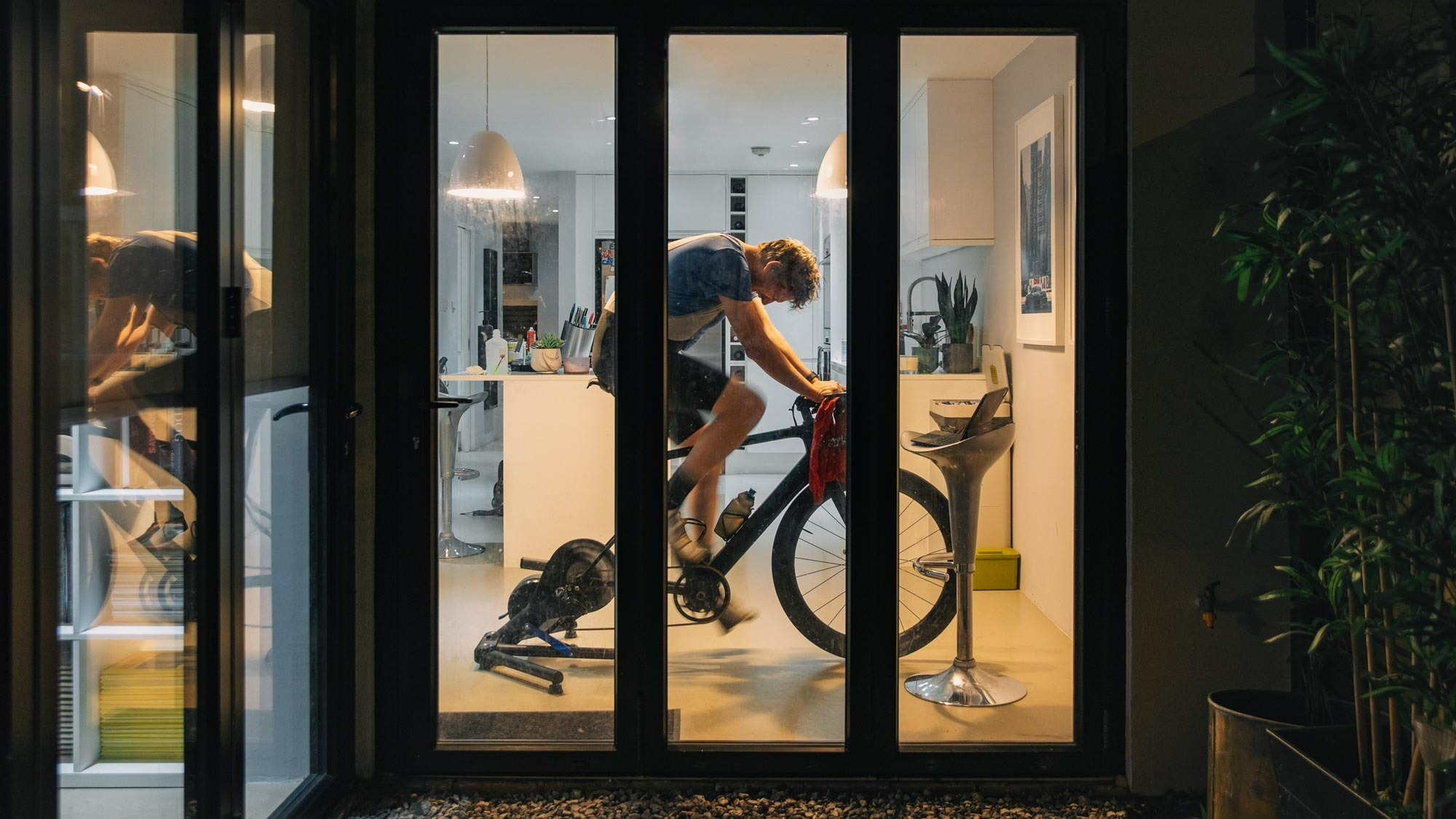Pixel 3a vs. Moto G7: Which Budget Phone Wins?
The Pixel 3a brings the best parts of Google’s pricey flagships down to an affordable price. But how does it compare to the budget-minded Moto G7?
The $399 Pixel 3a successfully brings most of the best parts of Google’s pricey Pixel flagships down to an affordable price. But how does it compare to the budget mainstay Moto G7?
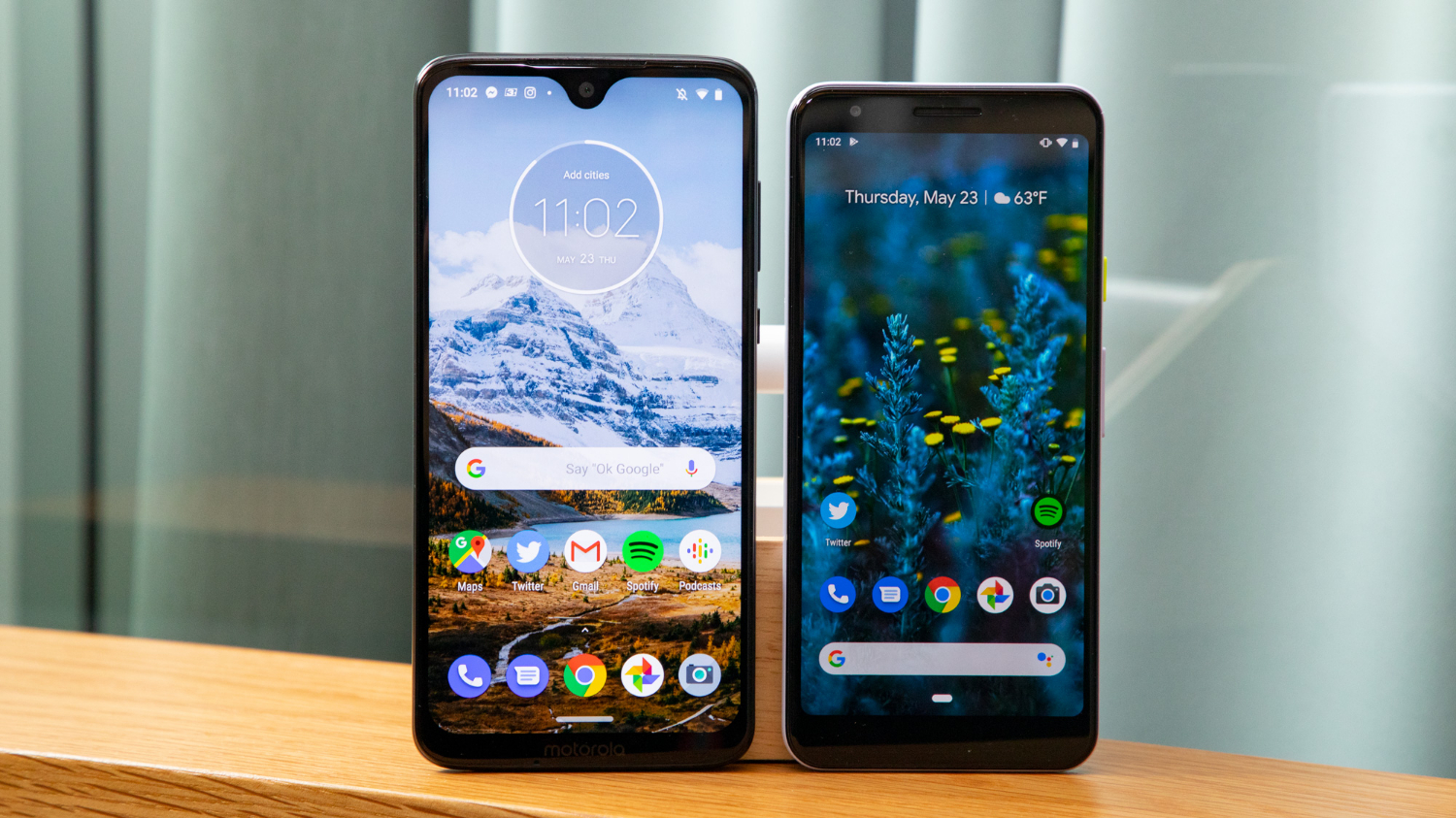
Across the board, the Moto G7 appears to be outmatched. It’s got a less powerful processor, its camera is less clever, its battery life is worse and its screen is far less tantalizing. And yet, Motorola’s handset costs $100 less than the baby Pixel.
Do the benefits of the Pixel 3a outweigh the extra expense? We compared the two enticing midrange handsets to decide exactly that.
Specs Compared
| Google Pixel 3a | Moto G7 | |
| Price | $399 | $299 |
| Screen Size (Resolution) | 5.6-inch OLED (2220x1080) | 6-inch LCD (2270x1080) |
| OS | Android 9 Pie | Android 9 Pie |
| Processor | Snapdragon 670 | Snapdragon 632 |
| RAM | 4GB | 4GB |
| Storage | 64GB | 64GB (expandable) |
| Rear Camera | 12.2 MP (ƒ/1.8) | 12 MP (ƒ/1.8) and 5 MP (ƒ/2.2) |
| Front Camera | 8 MP (ƒ/2.0) | 8 MP (ƒ/2.2) |
| Battery | 3,000 mAh | 3,000 mAh |
| Size | 5.96 x 2.76 x 0.32 in | 6.1 x 3 x 0.31 inches |
| Weight | 5.19 ounces | 6.1 ounces |
| Color | Clearly Black, Clearly White, Purple-ish | Ceramic Black, Clear White |
Design
Despite the overwhelming similarity in smartphone design these days, the Pixel 3a and Moto G7 couldn’t look more different. Google’s handset basically looks like a baby version of its flagship, only made from polycarbonate with chunkier bezels. In contrast,he Moto G7 incorporates a teardrop notch, almost like a knockoff of recent (much more expensive) devices from the likes of Huawei and OnePlus.
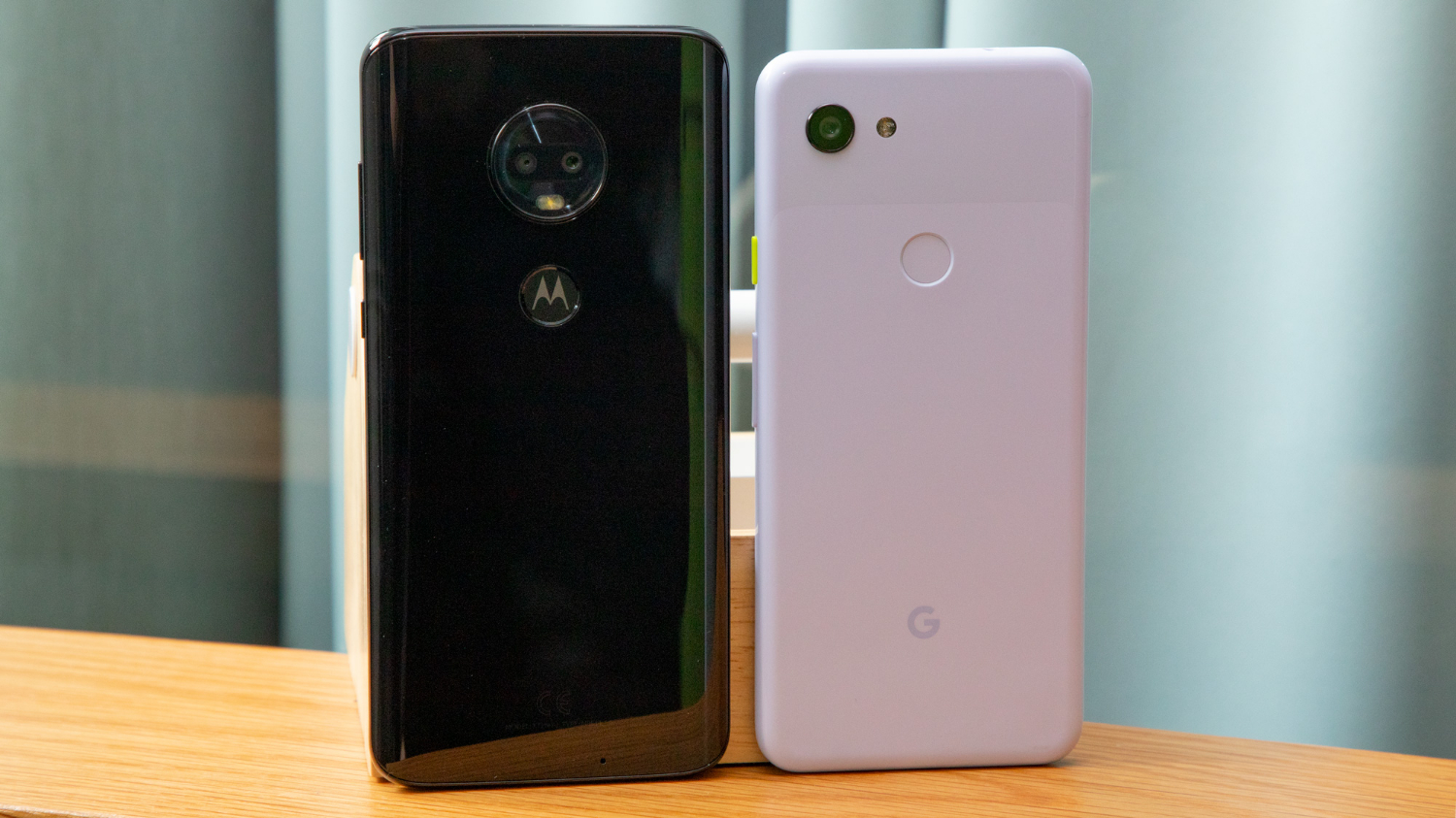
There’s also a massive difference in terms of size: the screen on the Pixel 3a measures 5.6 inches, while the Moto G7 has a massive (well, for a budget device, anyway) 6.2-inch display. Not surprisingly, the Moto G7 feels a smidge heavier in the hand. Both phones keep their fingerprint sensors around the back and feature headphone jacks, and neither is IP-rated water resistant.
To be perfectly frank, neither of these devices is really a stunner. But I prefer the minimalism of Google’s aesthetic with the Pixel 3a. I also really like the colors Google has chosen for its latest handset — Purple-ish is a lovely lavender-esque hue with a stylish fluorescent yellow power button, while Clearly White tosses in an orange button on the side for a bit of flair. Compare that to the rather drab glossy black of the Moto G7, and I really have to give the edge to Google here — bezels be damned.
Winner: Pixel 3a
Display
Size aside, the Pixel 3a has the display you want, simply because Google has packaged an OLED panel inside this phone. That’s practically unheard of for a device at this price point — ordinarily, you’d have to spend upward of $500 to get a screen like that in something like the Moto Z3 Play or the OnePlus 6T, and here Google’s undercut both those companies by several hundred dollars.
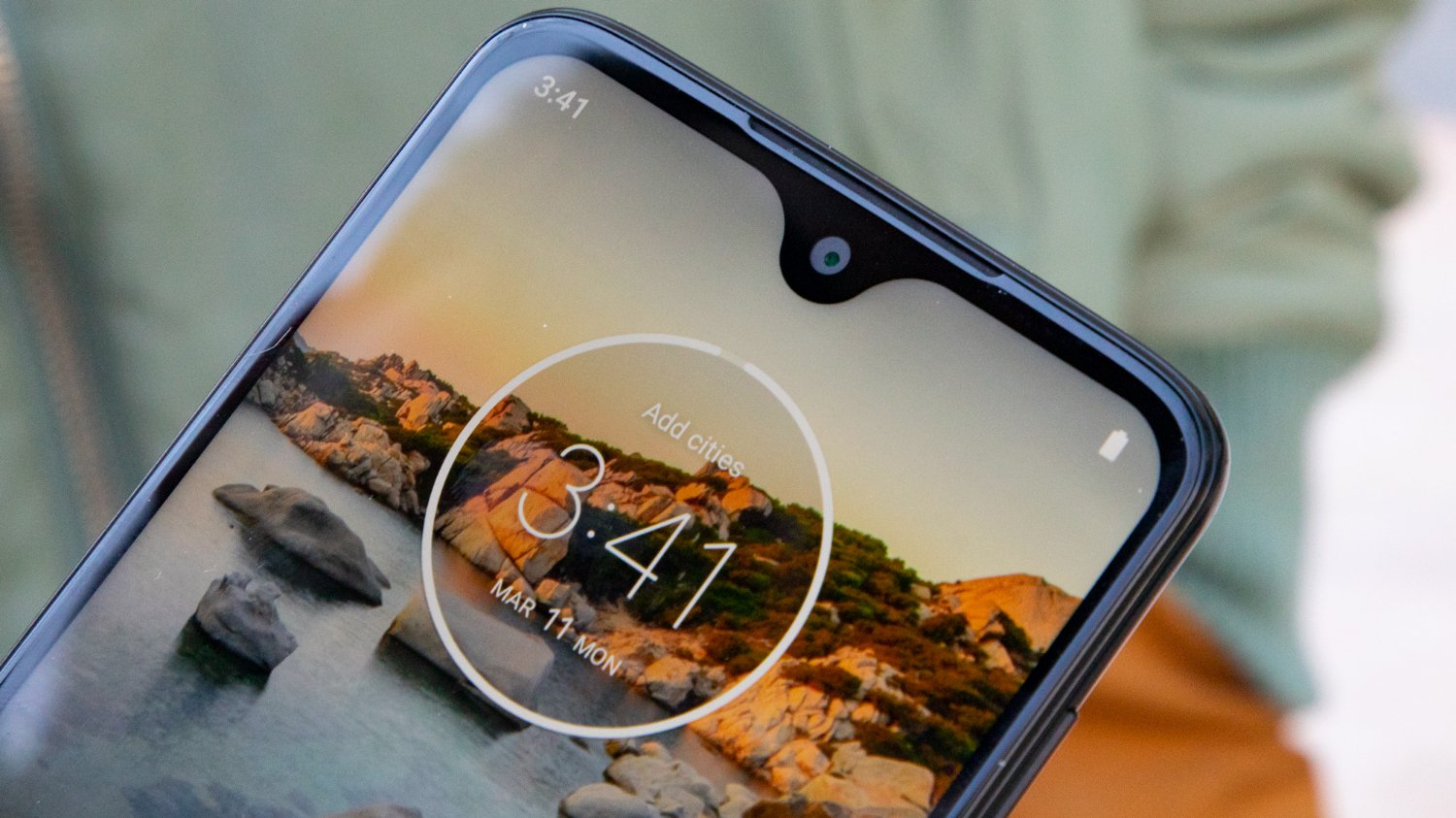
The Moto G7, conversely, employs a traditional LCD panel. And while it’s a perfectly fine for an LCD display, you’re missing out on the kind of deep blacks, stunning contrast and vivid colors that OLED technology provides. (The upcoming Dark Theme arriving in Android Q will simply look better on Google’s screen).
If there’s one area where Motorola’s device wins out, though, it would have to be brightness. The Moto G7’s peak of 445 nits makes outdoor viewing a bit easier on the eyes compared to the Pixel 3a’s 401-nit result.
Winner: Pixel 3a
Camera
The Moto G7 may have a pair of cameras on the back to the Pixel 3a’s single-lens shooter, but Google’s new handset can do a lot more with its one rear lens.
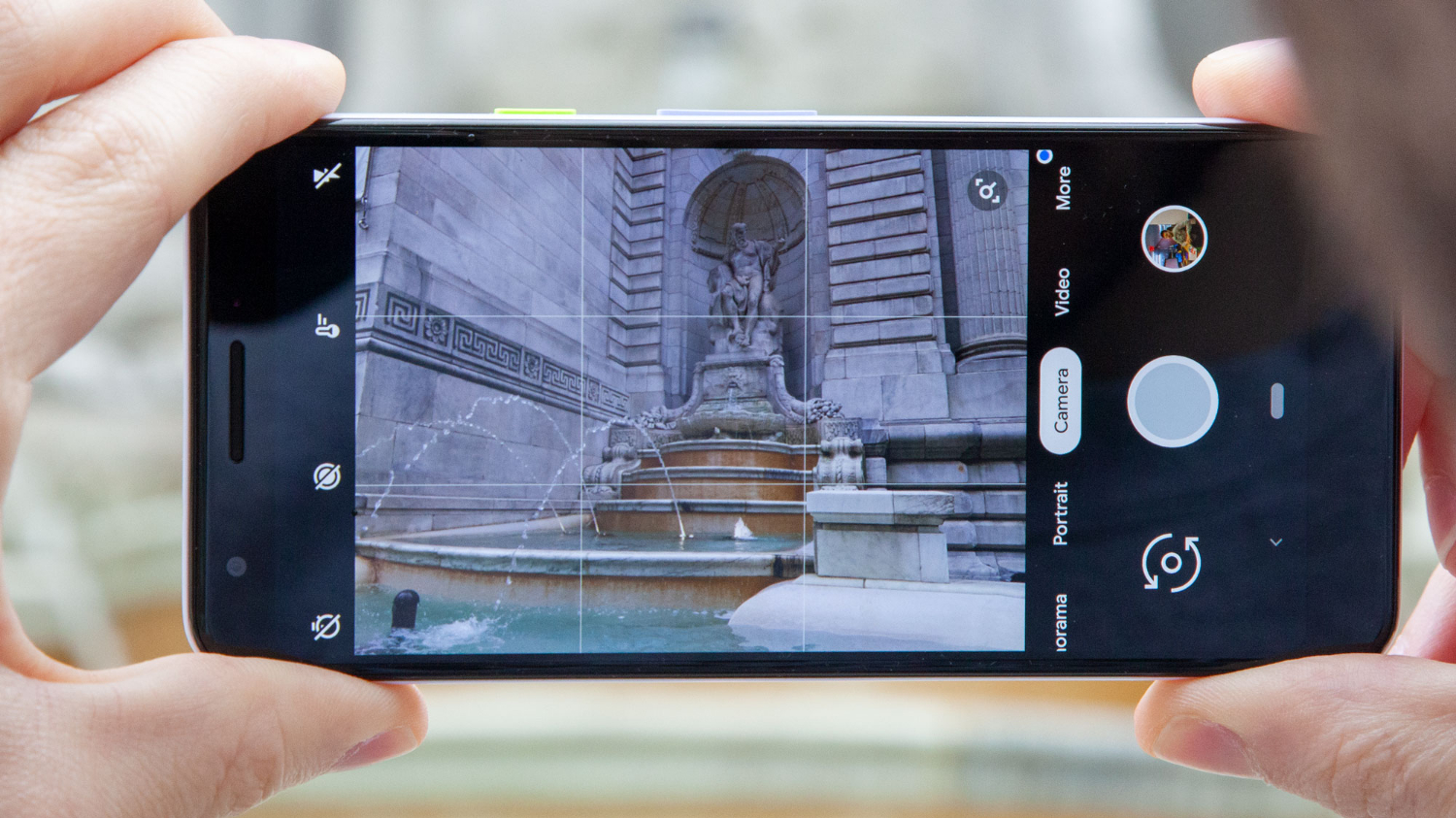
In fact, the Pixel 3a’s 12.2-megapixel rear sensor is pretty much identical to the one in the twice-as-expensive Pixel 3 — the only difference is that it lacks Google’s Pixel Visual Core coprocessor to speed up image crunching. That doesn’t really impact the way photos look, however — just the amount of time it takes to deliver them.
That means you can capture some phenomenal shots with Google’s handset that the Moto G7 simply doesn’t have an answer for. Motorola’s 12-MP primary shooter and accompanying 5-MP depth sensor can capture some halfway decent bokeh portraits in the proper conditions, but they can’t compare to the balanced exposure and crisp details the Pixel 3a pulls off.
In sunny conditions, the Moto G7 can be strong. But Motorola’s camera software always has a habit of favoring unnaturally saturated hues, which painted this gorgeous spring scene in New York’s Bryant Park into a caricature. Compare that to the Pixel 3a’s more realistic result, with its exquisite contrast within the trees lining the lawn, and it’s easy to see why Google’s latest phone is such a revelation in this price range.
Winner: Pixel 3a
Performance
The Pixel 3a is armed with Qualcomm’s Snapdragon 670 processor, which is a bit faster than the Snapdragon 632 inside the Moto G7.
How much faster? While neither of these phones really feels all that different during normal circumstances, like scrolling through Twitter or navigating within Google Maps, the Pixel 3a notched a few hundred points higher than the Moto G7 in Geekbench 4, a test of overall system performance, by a score of 5,146 to 4,814.
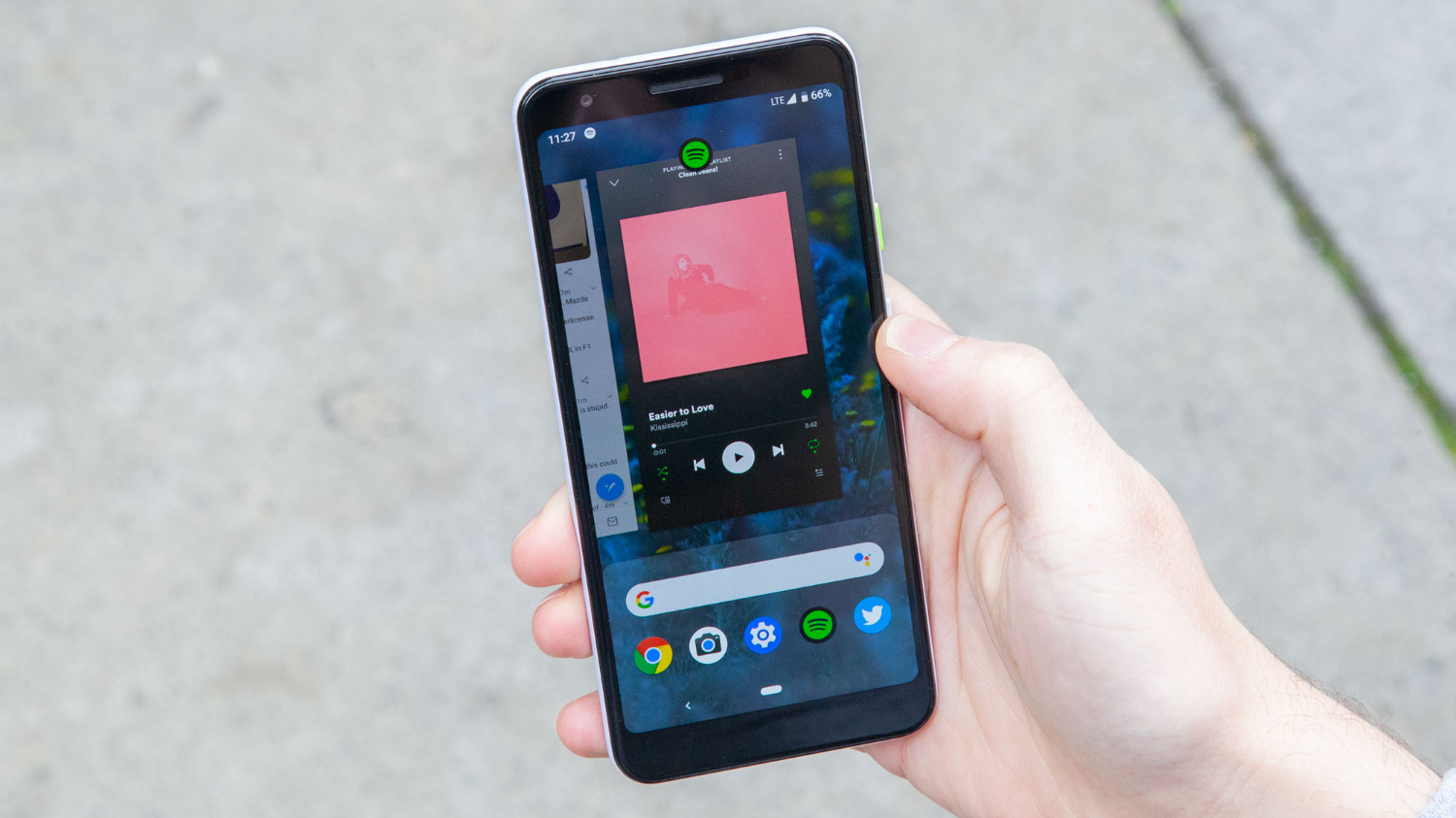
However, the Pixel 3a proved much more capable in terms of playing graphics-intensive games, as evidenced by its 3DMark Sling Shot Extreme OpenGL ES 3.1 score of 1,602. The Moto G7, which could only muster a measly 512 points, was less than a third as powerful. Ultimately, I’d never recommend a midrange handset for mobile gaming — though if you have to choose between the two, the Pixel 3a is a safer bet.
Winner: Pixel 3a
Battery Life
Both the Pixel 3a and Moto G7 incorporate 3,000-mAh batteries, though again, this is a situation where Google’s handset ekes a bit more out of its hardware. The Pixel 3a lasted for 11 hours and 59 minutes in Tom’s Guide’s battery test, which streams websites endlessly over LTE at 150 nits of screen brightness. The Moto G7, conversely, called it quits after 8 hours and 50 minutes.
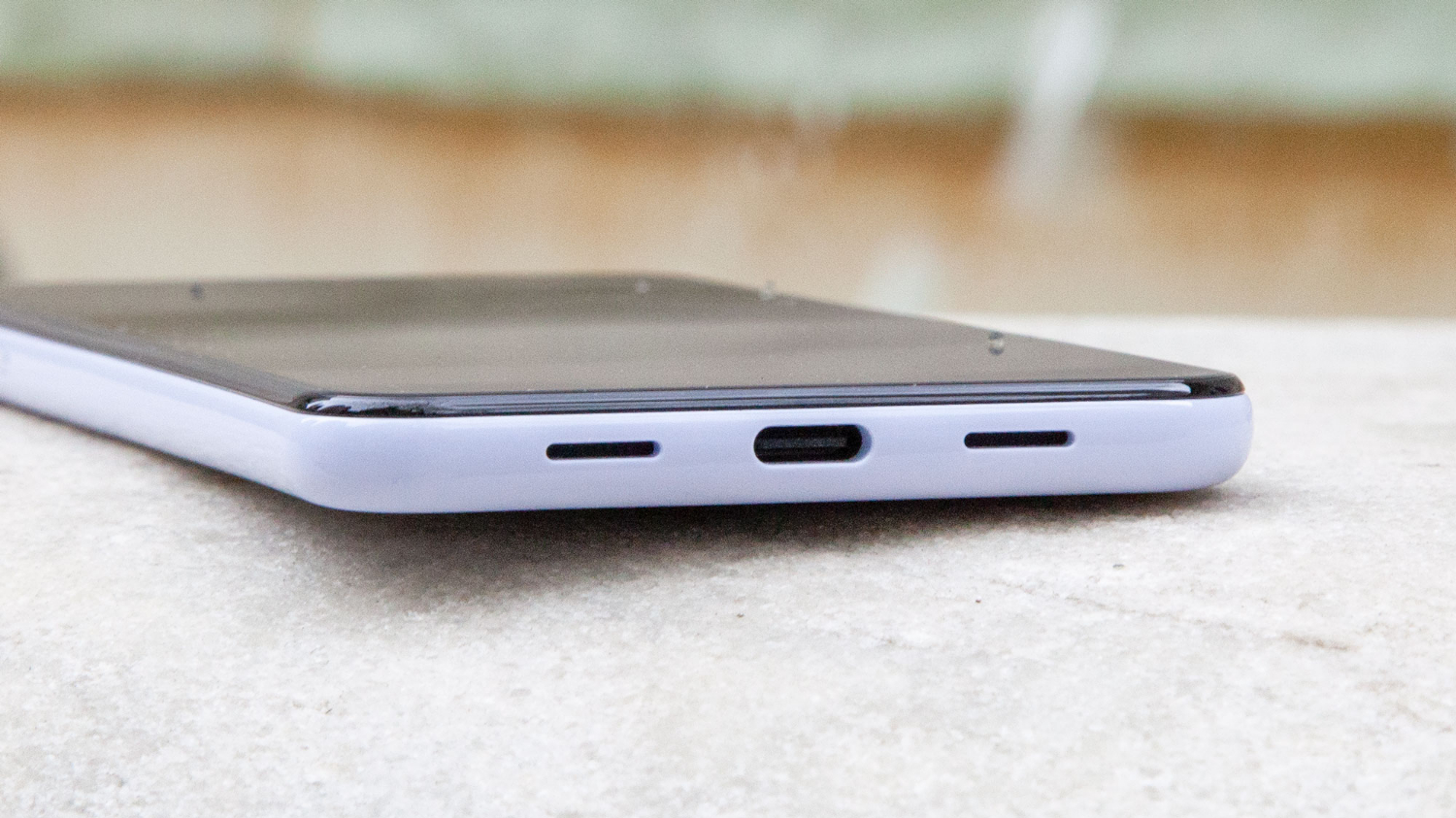
If it's battery life that you're most concerned with, however, consider the Moto G7 Power. Armed with a 5,000-mAh power pack, Motorola’s endurance-minded budget handset lasted an astounding 15 hours and 35 minutes in our test, yet costs $50 less than the regular G7. You will have to give up the regular G7’s dual-lens cameras and additional gigabyte of RAM with the G7 Power, though.
Thankfully, both Google’s and Motorola’s phones support fast charging with their included adapters — the Pixel 3a utilizes 18W USB PD charging, while the Moto G7 employs Motorola’s 15W TurboPower protocol (which is really just Qualcomm’s QuickCharge 2.0 spec).
Winner: Pixel 3a
Software
Android 9 Pie ships out of the box on both the Pixel 3a and Moto G7. And while these are both what you’d call stock installations — save for some special features, like Google’s camera extras and Call Screen — the big difference in terms of software with respect to both of these phones is long-term support and updates.
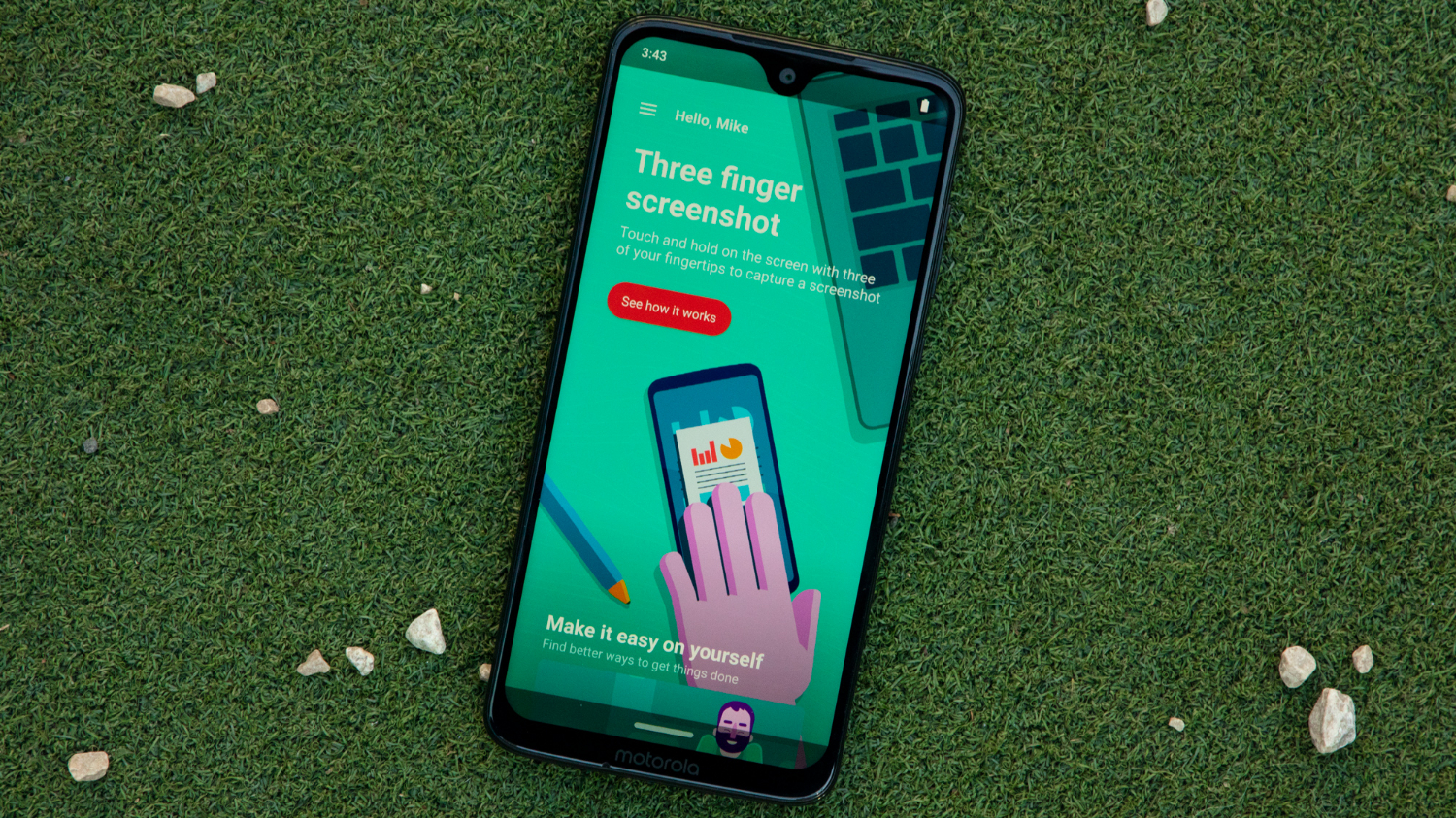
Google has committed to three years of Android software and security support with the Pixel 3a, which again is unheard of in the realm of cheap phones. Motorola is opting for a far less encouraging single year of major upgrades, followed by two years of security patches, as it does for all its non-flagship handsets. Additionally, Motorola isn’t the quickest when it comes to distributing its updates, while Google is all but certain to be the first to push out Android Q when it arrives later this year.
That makes the choice very simple. If you want a phone that will last you and keep you up-to-date on all the latest features, the Pixel 3a is clearly the way to go.
Winner: Pixel 3a
Price and Availability
The Pixel 3a starts at $399 for the 5.6-inch model, and goes up to $479 for the 6-inch Pixel 3a XL. Both are available unlocked, on Verizon or Google Fi, and will be arriving on T-Mobile in the near future.
The Moto G7 is exclusively available unlocked and costs $299. While you won’t find it in carrier stores like the Pixel 3a, the unlocked version does support both GSM and CDMA bands, meaning the device will work on any carrier’s network. A slightly less powerful version with a bigger battery, called the Moto G7 Power, is available through Verizon, T-Mobile and Sprint for $249.
Winner: Moto G7
Winner: Pixel 3a
The Pixel 3a may be considerably pricier than the Moto G7, but it is truly $100 better. Google’s camera and computational photography expertise is unmatched in this price range, the phone’s processor and battery life are best-in-class, and the years of software support make the Pixel 3a a better investment than its midrange rivals.
| Google Pixel 3a | Moto G7 | |
| Design (10) | 7 | 6 |
| Display (10) | 9 | 7 |
| Camera (25) | 23 | 16 |
| Performance (15) | 12 | 10 |
| Battery (20) | 17 | 12 |
| Software (10) | 10 | 8 |
| Price and Availability (10) | 7 | 8 |
| Total (100) | 85 | 67 |
If you cannot spend more than $299 on a smartphone, you shouldn’t regret buying a Moto G7 — you could really do a lot worse. However, this is one of those instances where the pricier alternative pays for itself over and over again.
Sign up to get the BEST of Tom's Guide direct to your inbox.
Get instant access to breaking news, the hottest reviews, great deals and helpful tips.
Adam Ismail is a staff writer at Jalopnik and previously worked on Tom's Guide covering smartphones, car tech and gaming. His love for all things mobile began with the original Motorola Droid; since then he’s owned a variety of Android and iOS-powered handsets, refusing to stay loyal to one platform. His work has also appeared on Digital Trends and GTPlanet. When he’s not fiddling with the latest devices, he’s at an indie pop show, recording a podcast or playing Sega Dreamcast.
-
Pete D. This article is missing the main spec many average Americans are forced to deal with on a daily basis, Saving Money on plans, and the Pixel 3a finishes a distant 2nd to any Moto phone in the vital Mobile Virtual Network Operators spec as they work with every carrier, from the largest to the smallest. If you really want both choices of carriers and to save a lot of money, go with Moto especially as it is $242.99 on Motorola's website with discount Moto10 and features truly expanded memory. It's not a great phone, but it's a good one that will save you a lot of money in comparison to most others.Reply -
James_397 ReplyAIsmail said:The Pixel 3a brings the best parts of Google’s pricey flagships down to an affordable price. But how does it compare to the budget-minded Moto G7?
Pixel 3a vs. Moto G7: Why Google’s Worth the Extra $100 : Read more
On such inexpensive phones as these, no one would opt for a "plan" but simply purchase the phone unlocked... period. The Pixel 3a is the obvious choice. Period.Pete D. said:This article is missing the main spec many average Americans are forced to deal with on a daily basis, Saving Money on plans, and the Pixel 3a finishes a distant 2nd to any Moto phone in the vital Mobile Virtual Network Operators spec as they work with every carrier, from the largest to the smallest.
